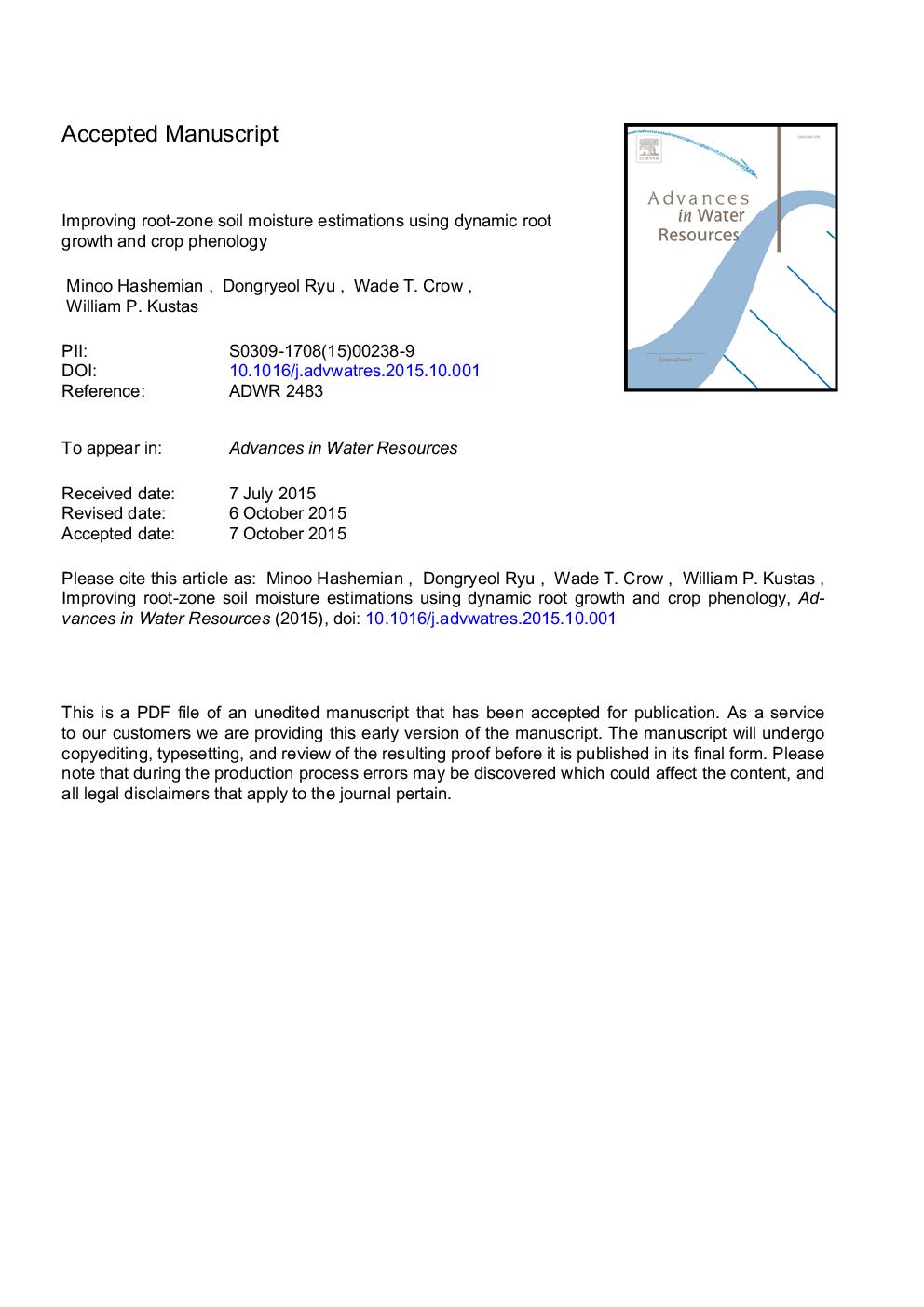| Article ID | Journal | Published Year | Pages | File Type |
|---|---|---|---|---|
| 6380869 | Advances in Water Resources | 2015 | 37 Pages |
Abstract
Water Energy Balance (WEB) Soil Vegetation Atmosphere Transfer (SVAT) modelling can be used to estimate soil moisture by forcing the model with observed data such as precipitation and solar radiation. Recently, an innovative approach that assimilates remotely sensed thermal infrared (TIR) observations into WEB-SVAT to improve the results has been proposed. However, the efficacy of the model-observation integration relies on the model's realistic representation of soil water processes. Here, we explore methods to improve the soil water processes of a simple WEB-SVAT model by adopting and incorporating an exponential root water uptake model with water stress compensation and establishing a more appropriate soil-biophysical linkage between root-zone moisture content, above-ground states and biophysical indices. The existing WEB-SVAT model is extended to a new Multi-layer WEB-SVAT with Dynamic Root distribution (MWSDR) that has five soil layers. Impacts of plant root depth variations, growth stages and phenological cycle of the vegetation on transpiration are considered in developing stages. Hydrometeorological and biogeophysical measurements collected from two experimental sites, one in Dookie, Victoria, Australia and the other in Ponca, Oklahoma, USA, are used to validate the new model. Results demonstrate that MWSDR provides improved soil moisture, transpiration and evaporation predictions which, in turn, can provide an improved physical basis for assimilating remotely sensed data into the model. Results also show the importance of having an adequate representation of vegetation-related transpiration process for an appropriate simulation of water transfer in a complicated system of soil, plants and atmosphere.
Related Topics
Physical Sciences and Engineering
Earth and Planetary Sciences
Earth-Surface Processes
Authors
Minoo Hashemian, Dongryeol Ryu, Wade T. Crow, William P. Kustas,
